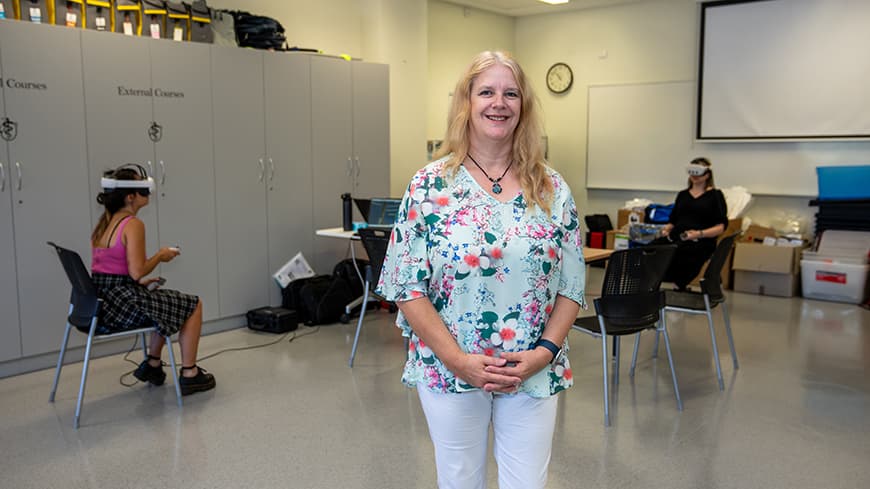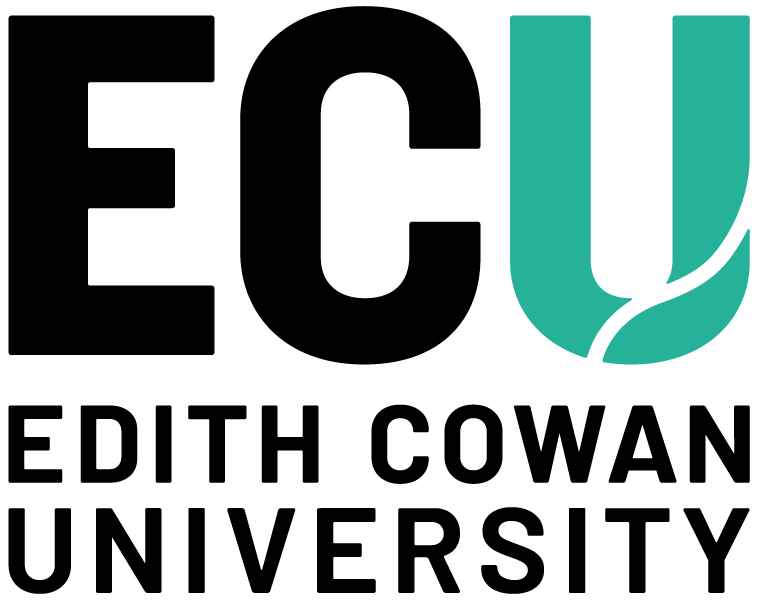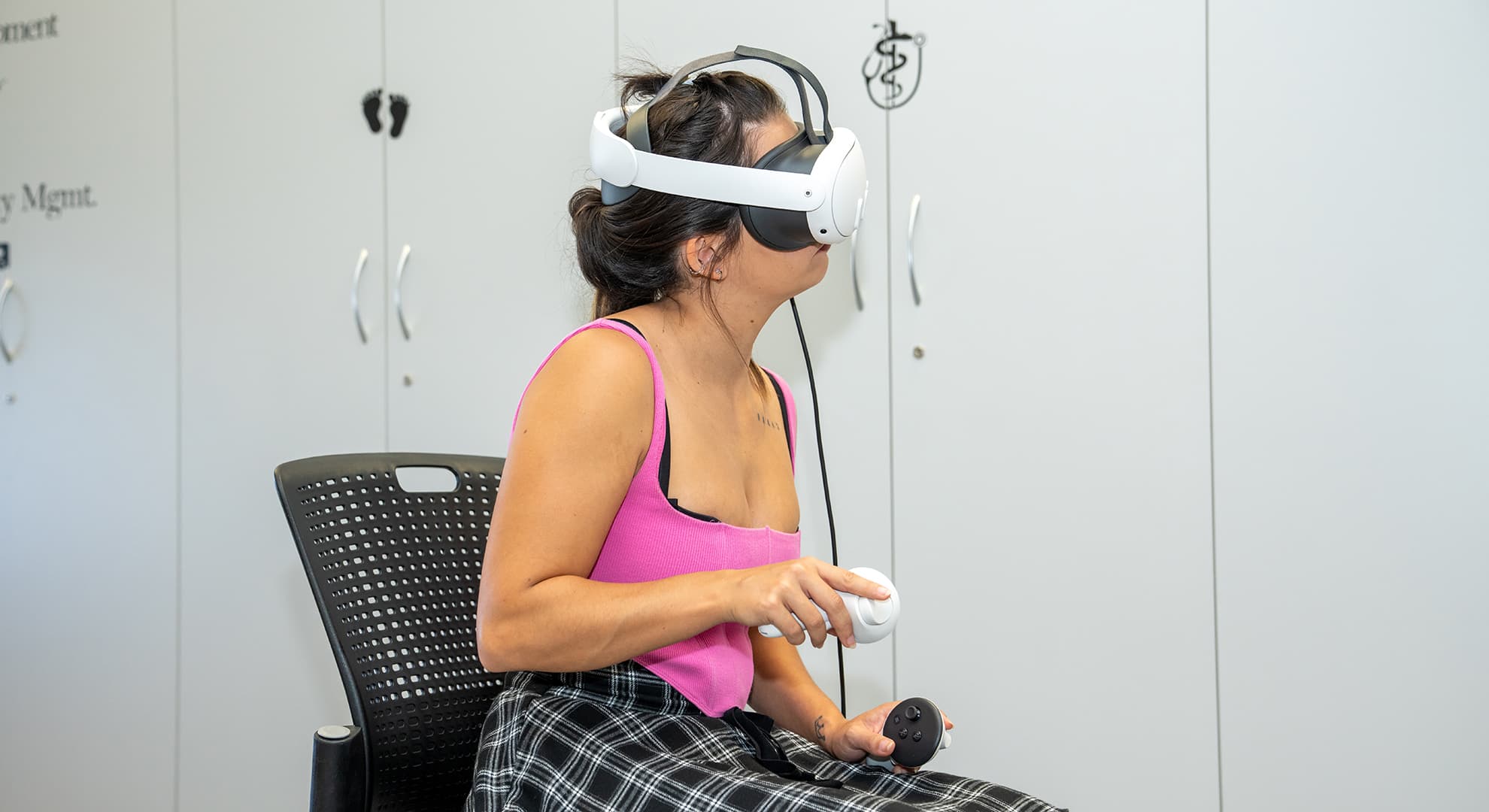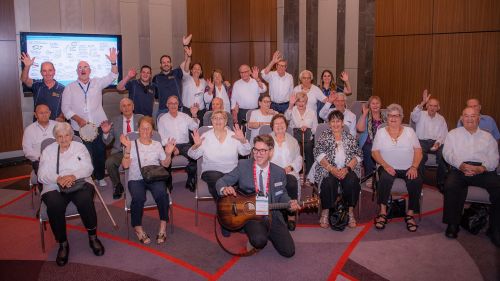A new virtual reality (VR) training program developed by Edith Cowan University (ECU) is set to revolutionise how volunteer ambulance officers and paramedics prepare for unplanned out-of-hospital births.
ECU PhD candidate Michella Hill designed the NEONATE in VR training to enhance confidence and competency in managing birth emergencies before arriving at hospital.
It has been developed in response to Michella's earlier study which investigated volunteer ambulance officers' perceptions of training, experience and confidence regarding unplanned out-of-hospital births, and planned homebirth with obstetric emergencies where ambulance assistance is required.
 PhD candidate Michella Hill has developed a virtual reality training program for volunteer ambulance officers and paramedics to enhance confidence and competency in managing birth emergencies before arriving at hospital.
PhD candidate Michella Hill has developed a virtual reality training program for volunteer ambulance officers and paramedics to enhance confidence and competency in managing birth emergencies before arriving at hospital.
Immersive training for high-stakes situations
NEONATE in VR is an interactive 30 to 40-minute virtual reality simulation that guides users through critical neonatal care scenarios. The program focuses on key aspects such as temperature management, respiratory distress, cardiopulmonary resuscitation (CPR), and the one-minute Apgar score assessment.
"Out-of-hospital births are rare events, meaning paramedics and volunteer ambulance officers often have limited exposure in this critical area," Michella said.
"The infrequency of these cases creates anxiety, and when they do occur, they can be high-pressure situations where immediate, skilled intervention is required."
The program is tailored for paramedics, volunteer ambulance officers, paramedic students, and nursing and midwifery students. It includes an initial tutorial, making it accessible for those unfamiliar with VR, followed by hands-on scenarios featuring a neonate in respiratory distress and a neonate requiring CPR.
Bridging the gap between classroom theory and real-life emergencies
Traditional in-service training often prioritises high-risk, high-frequency emergencies, leaving less time for obstetric and neonatal emergency preparation. NEONATE in VR provides a flexible, high-fidelity alternative that offers a consistent and realistic training experience.
"In a classroom setting, trainees often work with plastic mannequins and must imagine elements such as chest movements or a baby's cries," Michella said.
"With VR, they can actually see the baby move and hear realistic breathing sounds, which significantly enhances engagement and skill retention."
Accessibility and future availability
Michella said a key advantage of the NEONATE in VR is its accessibility.
"Unlike traditional in-person training, which requires coordination, significant resources and for rural volunteer ambulance officers potentially travelling long distances, NEONATE in VR can be used anytime and anywhere," Michella said.
"It serves as both a standalone training tool and a supplement to existing training programs."
Acknowledging key supporters
The development of NEONATE in VR has been made possible through funding from the Women and Infant Research Foundation (WIRF) Acceleration Grant, in partnership with St John WA.
Trials are currently underway with student paramedics and midwives, with registered paramedics and volunteer ambulance officers set to begin testing in April and May.
The NEONATE in VR training is expected to be available to the broader healthcare community in early 2026 following data analysis and final development stages.

 A new virtual reality training program developed by Edith Cowan University aims to help volunteer ambulance officers and paramedics prepare for unplanned out-of-hospital births.
A new virtual reality training program developed by Edith Cowan University aims to help volunteer ambulance officers and paramedics prepare for unplanned out-of-hospital births.


